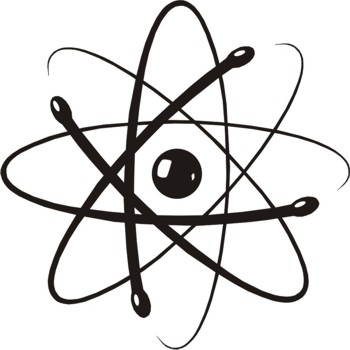 QUANTUM
MECHANICS I
QUANTUM
MECHANICS I QUANTUM
MECHANICS I
QUANTUM
MECHANICS IUniversity of Maryland at College Park, Fall of 2007
Instructor:
Dr. Paulo Bedaque2105 Physics Building
(301) 405-6148
bedaque@umd.edu
Textbooks:
We will not follow any book too closely but a useful reference is"Introduction to Quantum Mechanics", David J. Griffths.
We will have time for very little discussion of the historical develoment of the subject. I suggest you read"Introducing Quantum Theory", by J. P. McEvoy
during the first couple of weeks (or before the classes start) in order to learn a bit about the history and also to be introduced to the subject without getting deterred by technicalities. It makes a great, light summer reading (it's a comics book !).Keep in mind that different people will enjoy different books. Our library has a good collection of them for you to explore. The best book for you will be the one you like the most.
Course Policies:
Classes will meet on Mondays (10:00am to 10:50am), Wednesdays (10:00am and 11:50am) and Fridays (10:00am to 10:50am). Office hours will be from 11:00am to 12 noon, Mondays and Fridays in the instructor's office (2103 Physics Building).We will have three exams, two midterms and a final, and periodic home problems. The grade will be based on the two exams (25% for each midterm, 40% for the final) and homework (10%).
Tentative Syllabus:
| Aug. 29 | Introduction to the class The rise of quantum ideas |
| Aug. 31 | Blackbody radiation |
| Sep. 5 | Photoelectric effect |
| Sep. 7 | Compton scattering |
| Sep. 10 | Matter waves |
| Sep. 12 | Schroedinger equation, the wave function |
| Sep. 14 | Probability and the statistical interpretation of the wave function |
| Sep. 17 | Double-slit experiment |
| Sep. 19 | Momentum operator and the Uncertainty Principle |
| Sep. 21 | Free particle |
| Sep. 24 | Infinite square well |
| Sep. 26 | Finite square well |
| Sep. 28 | Harmonic oscillator |
| Oct. 1 | Harmonic oscillator |
| Oct. 3 | Potential barriers |
| Oct. 5 | Tunneling |
| Oct. 8 | Review |
| Oct. 10 | Midterm |
| Oct. 12 | Midterm discussion |
| Oct. 15 | Linear algebra: review |
| Oct. 17 | Linear algebra: review |
| Oct. 19 | The formalism of quantum mechanics: states, operators, observables, eigenstates, ... |
| Oct. 22 | Dirac notation |
| Oct. 24 | Dirac notation |
| Oct. 26 | Two-state systems |
| Oct. 29 | Two-state systems |
| Oct. 31 | Covalent binding |
| Nov. 2 | Review |
| Nov. 5 | Midterm |
| Nov. 7 | Three-dimensional Schroedinger equation |
| Nov. 9 | Three-dimensional square wells |
| Nov. 12 | Angular Momentum |
| Nov. 14 | Three-dimensional spherical wells |
| Nov. 16 | Hydrogen atom |
| Nov. 19 | Hydrogen atom |
| Nov. 21 | Hydrogen atom |
| Nov. 26 | Fine and hyperfine structure |
| Nov. 28 | |
| Nov. 30 | |
| Dec. 3 | |
| Dec. 5 | Complicated atoms, molecular binding, chemistry |
| Dec. 7 | Review |
| Dec. 10 | Review |
| Dec. 19 | Final: 8:00 am, room 1201 |
Homework:
Homework will be posted here, together with the solutions when available (the solutions are no longer available).Interesting links:
Blackbody radiation
You can buy your own blackbody here.
A nice figure of the blackbody spectrum.
The Universe as a blackbody: the spectrum from COBE and the tiny variations of the temperature with the direction in space. More about the COBE sattelite.
Even NASA scientists know that holes are really dark, even in Mars.
Photoelectric effect:
An applet that simulates the photoelectric effect. Try varying the different handles and predicting the outcome !
Spectra
A beautiful picture of the absoprtion spectrum of the Sun. Part of the hydrogen, mercury and neon emission spectra and the hydrogen absorption spectrum is shown here. Notice how the emission and absoprtion spectra of the hydrogen match. Based on their wavelength, can you ideintify the hydrogen lines (meaning, find out the initial and final states of the electron emiting those photons) ?
Electron double-slit experiment
The quantum Truth before your very eyes: Fantastic movie with a real implementation of the double slit experiment with electrons from researchers at Hitachi (courtesy of Prof. L. Orozco).
Infinite square well
I made a little movie showing the time evolution of a NON-stationary state of the infinite square well potential. This particular state is an equal superposition of the ground and first excited states.
Wave packetsOthers
Very useful applets (physlets) illustrating various aspects of quantum mechanics.
Cool quantum mechanics applets from the Ecole Polytechnique.
Lots of good quantum applets, courtesy of Charles Hawkins.
Problems with solutions and study aids